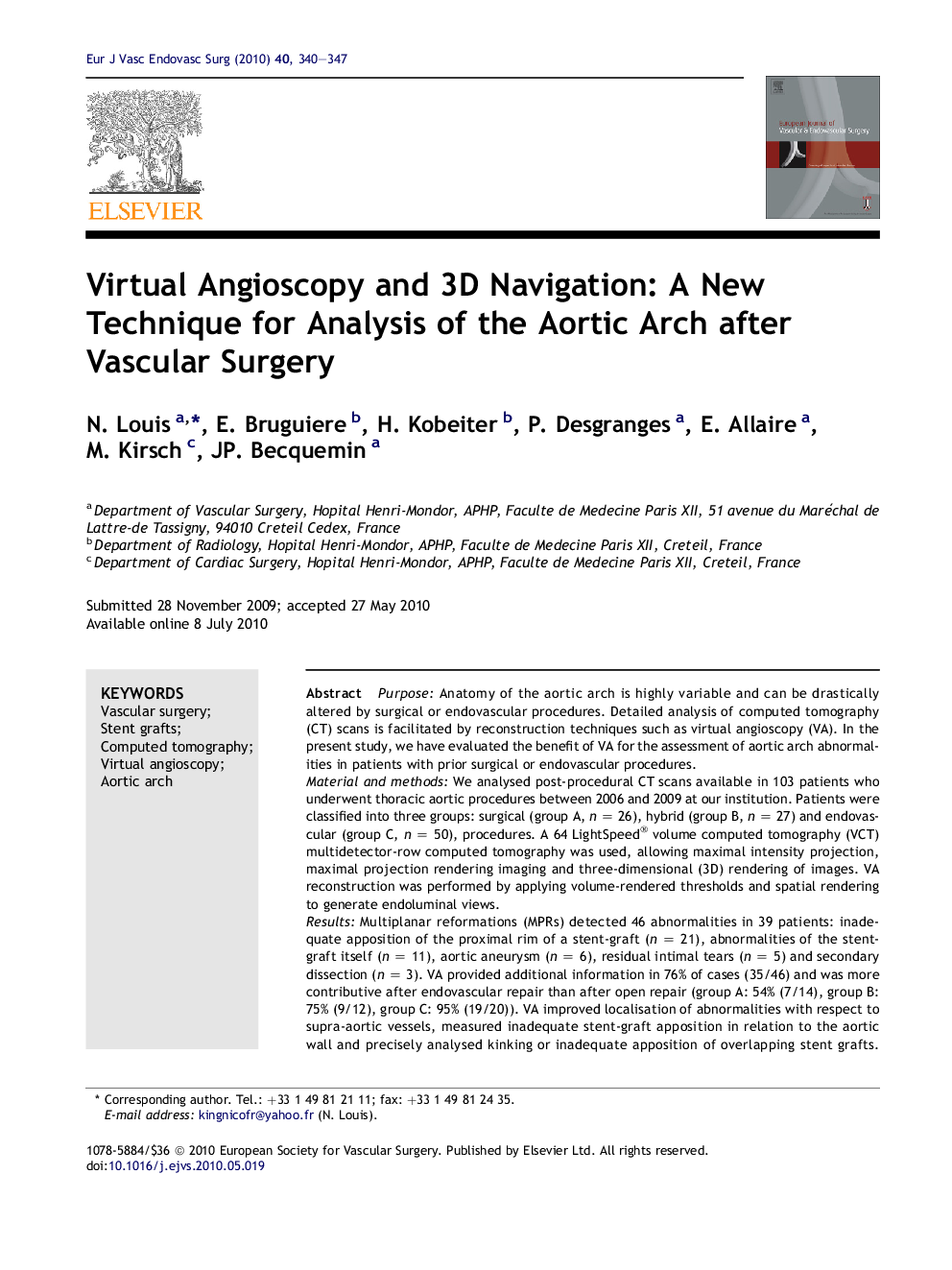| Article ID | Journal | Published Year | Pages | File Type |
|---|---|---|---|---|
| 2913010 | European Journal of Vascular and Endovascular Surgery | 2010 | 8 Pages |
PurposeAnatomy of the aortic arch is highly variable and can be drastically altered by surgical or endovascular procedures. Detailed analysis of computed tomography (CT) scans is facilitated by reconstruction techniques such as virtual angioscopy (VA). In the present study, we have evaluated the benefit of VA for the assessment of aortic arch abnormalities in patients with prior surgical or endovascular procedures.Material and methodsWe analysed post-procedural CT scans available in 103 patients who underwent thoracic aortic procedures between 2006 and 2009 at our institution. Patients were classified into three groups: surgical (group A, n = 26), hybrid (group B, n = 27) and endovascular (group C, n = 50), procedures. A 64 LightSpeed® volume computed tomography (VCT) multidetector-row computed tomography was used, allowing maximal intensity projection, maximal projection rendering imaging and three-dimensional (3D) rendering of images. VA reconstruction was performed by applying volume-rendered thresholds and spatial rendering to generate endoluminal views.ResultsMultiplanar reformations (MPRs) detected 46 abnormalities in 39 patients: inadequate apposition of the proximal rim of a stent-graft (n = 21), abnormalities of the stent-graft itself (n = 11), aortic aneurysm (n = 6), residual intimal tears (n = 5) and secondary dissection (n = 3). VA provided additional information in 76% of cases (35/46) and was more contributive after endovascular repair than after open repair (group A: 54% (7/14), group B: 75% (9/12), group C: 95% (19/20)). VA improved localisation of abnormalities with respect to supra-aortic vessels, measured inadequate stent-graft apposition in relation to the aortic wall and precisely analysed kinking or inadequate apposition of overlapping stent grafts. VA diagnosed three additional abnormalities: two false aneurysms and one retrograde dissection developed on a suture line.ConclusionsVA conceptualises planar images by 3D reconstruction. It provides additional information in comparison with conventional CT scans by allowing precise localisation of abnormalities with respect to the aortic wall itself and supra-aortic vessels. Furthermore, it facilitates analysis of abnormalities in case of overlapping stent grafts.
